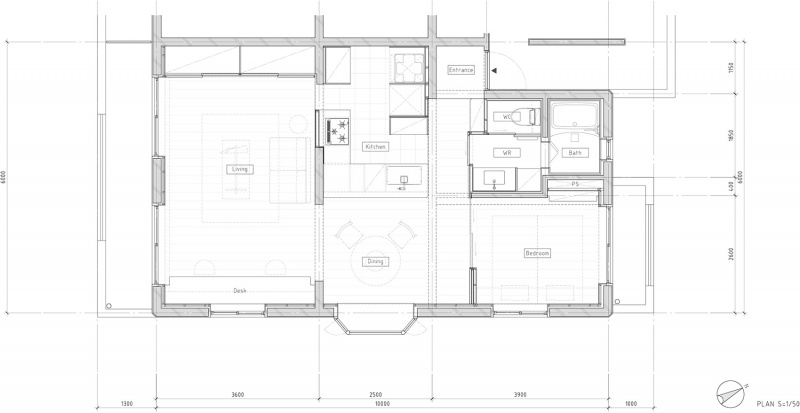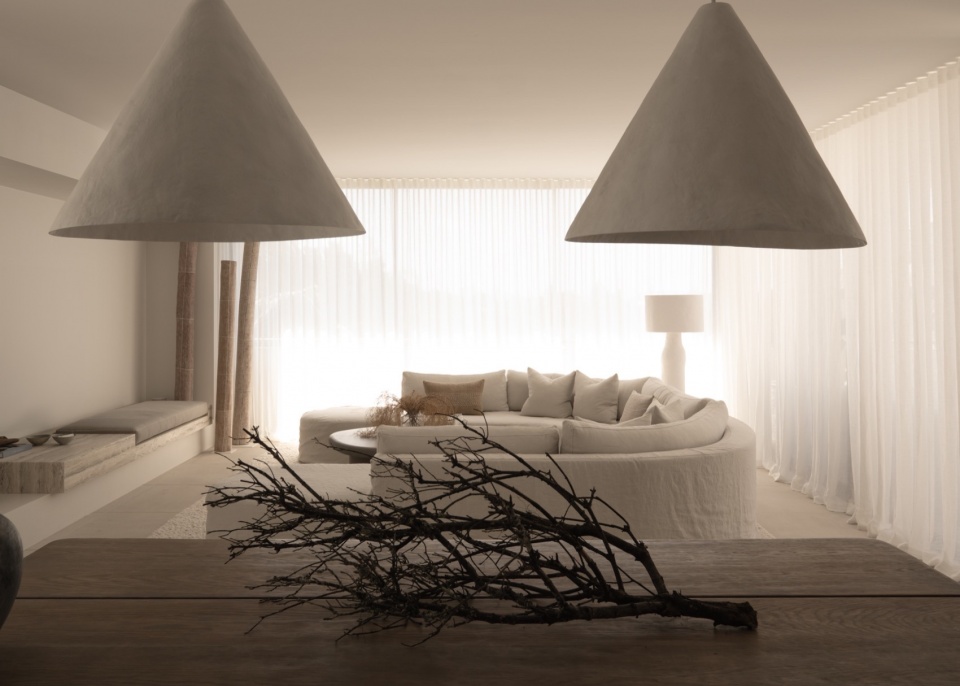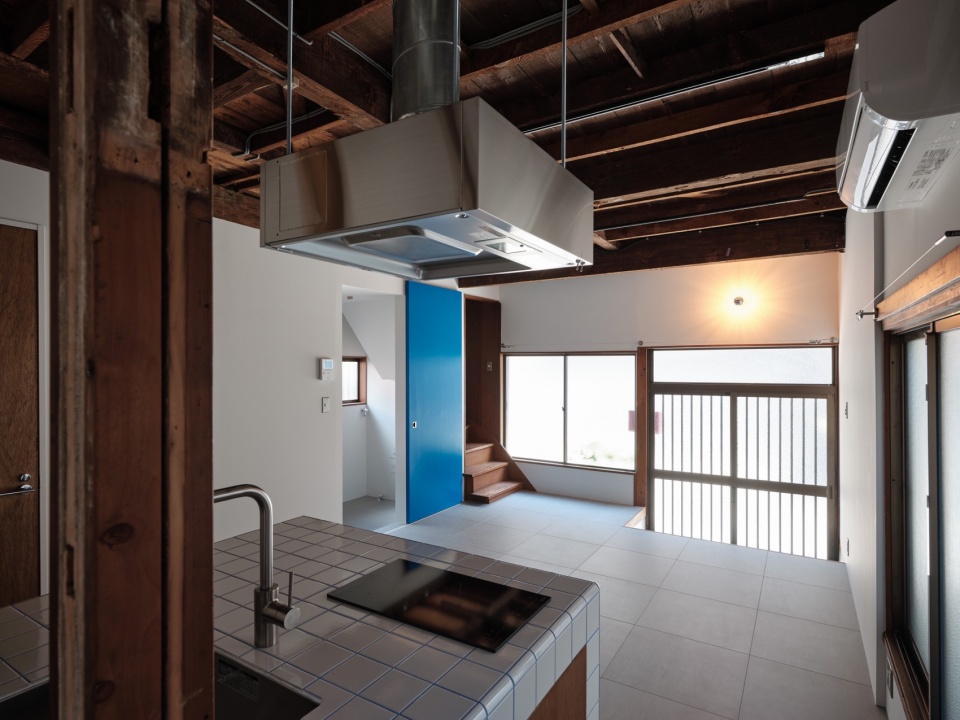

该项目是对位于日本东京市中心的一个面积约为 57 平方米的公寓单元进行改造。该单元很紧凑,但它是一个充满阳光的转角房间,面向一个大型植物园,尽管面积不大,但却有可能营造出丰富的生活环境。
This project is a renovation of a condominium unit with an area of approximately 57 square meters located in central Tokyo, Japan.Although the unit is compact, it is a sun-filled corner room and faces a large botanical garden, offering the potential for a rich living environment despite its small size.
▼空间概览,overview of the space ©Tomooki Kengaku
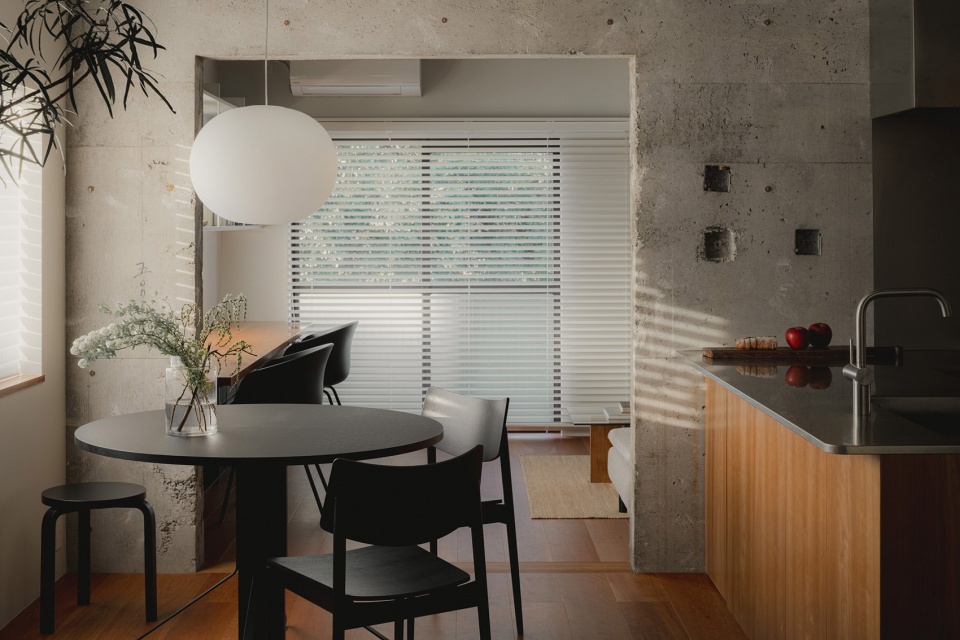
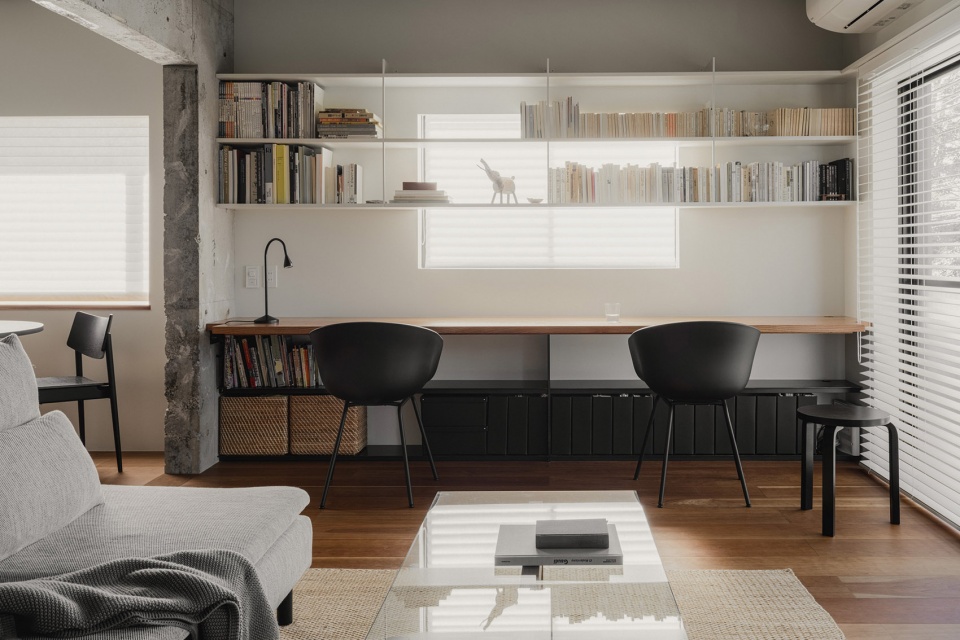
重构旧混凝土结构
Refining the old concrete structure
建筑的混凝土结构已坚持50年之久。建筑师拆除了所有旧的饰面材料,将原有的混凝土框架暴露出来。在该项目中,设计的目的旨在形成与混凝土结构相辅相成的室内环境,新材料也可以完美的融入这一切。
This building is a 50-year-old concrete structure. We removed all the old finishing materials, exposing the concrete framework. In this project, we aimed for an interior design where the contrast and juxtaposition of the concrete structure and new materials beautifully blend together.
▼旧混凝土结构,old concrete structure ©Tomooki Kengaku
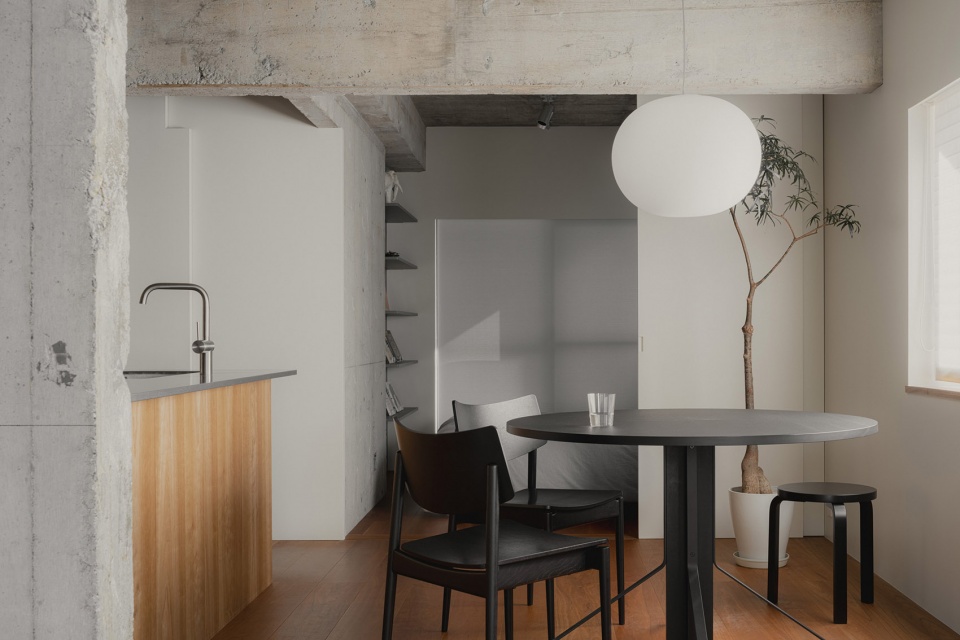
▼刻意暴露的混凝土框架,exposed concrete frame ©Tomooki Kengaku
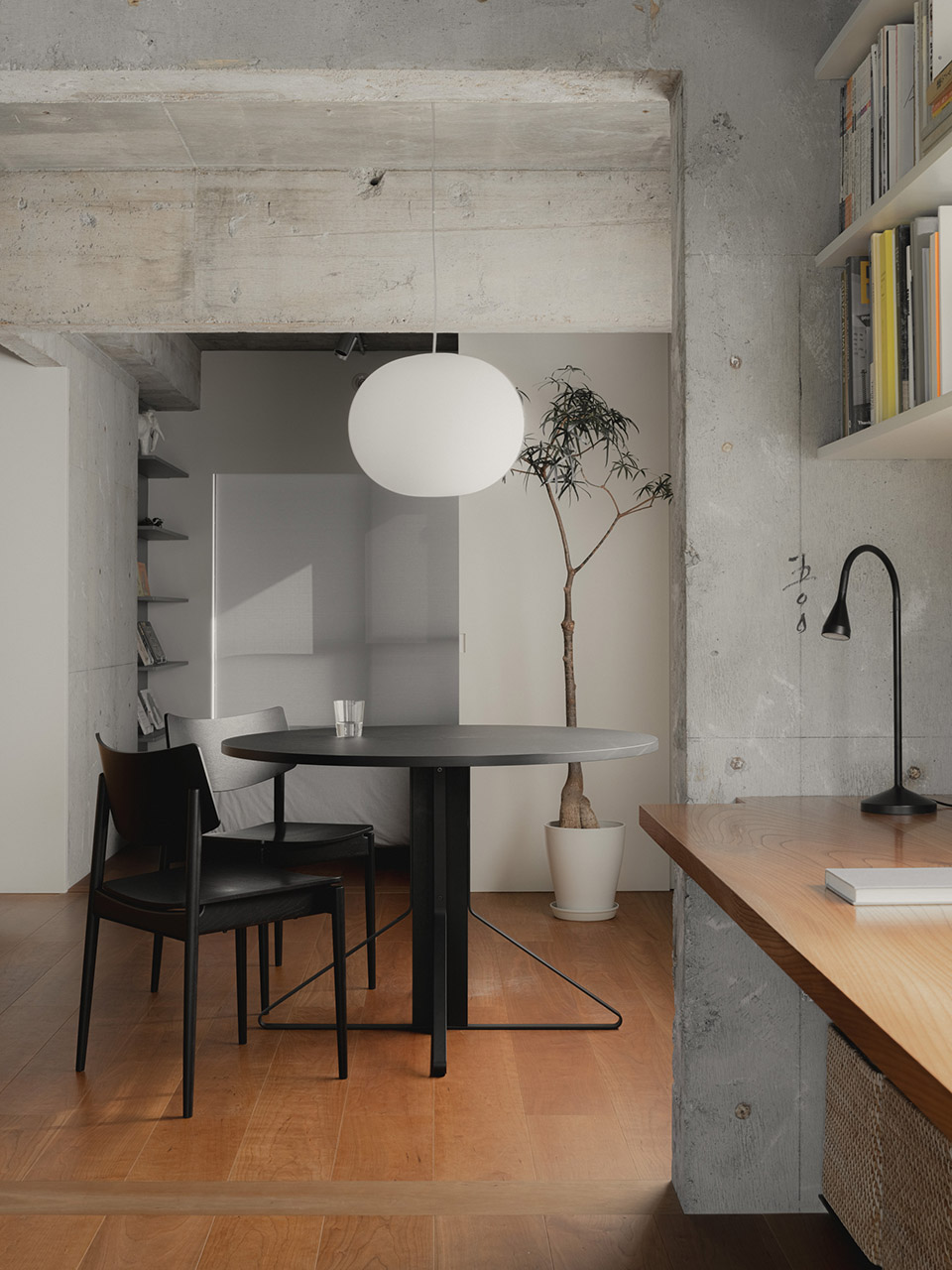
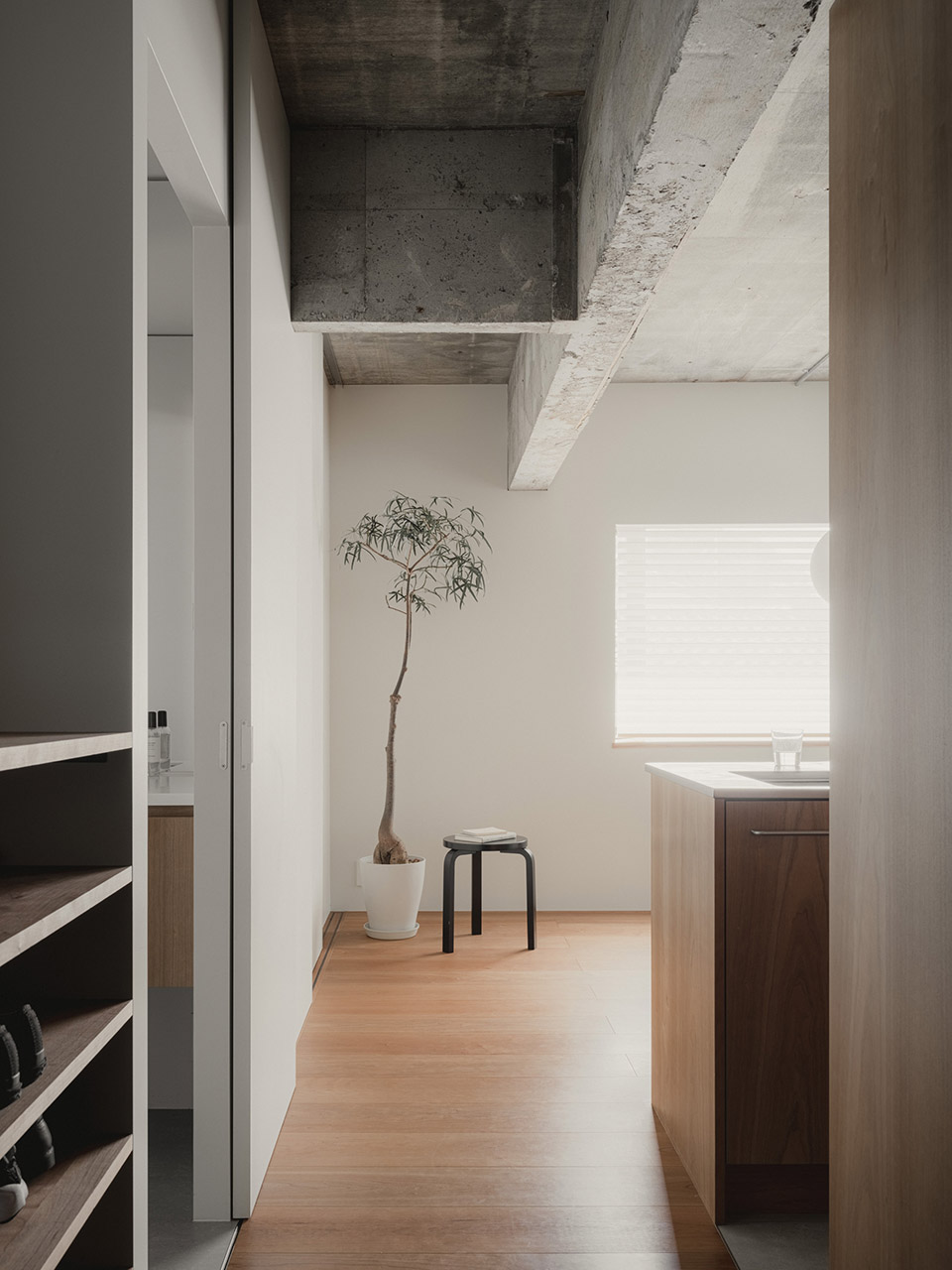
为紧凑空间中植入轻盈感与宽敞感
Giving a sense of lightness and spaciousness to the compact residence
建筑师根据家具和推拉门的主要位置布局了新平面,避免建造不必要的隔墙。该策略也为这个狭窄的住宅带来一丝轻盈和宽敞。同样,这也简化并合理化了建造过程。
We have structured the plan primarily around furniture and sliding doors, avoiding creating unnecessary walls wherever possible.This strategy has imparted a sense of lightness and expansiveness to this small residence. Simultaneously, it has rationalized and simplified the construction process.
▼为紧凑空间中植入轻盈感与宽敞感,giving a sense of lightness and spaciousness to the compact residence ©Tomooki Kengaku
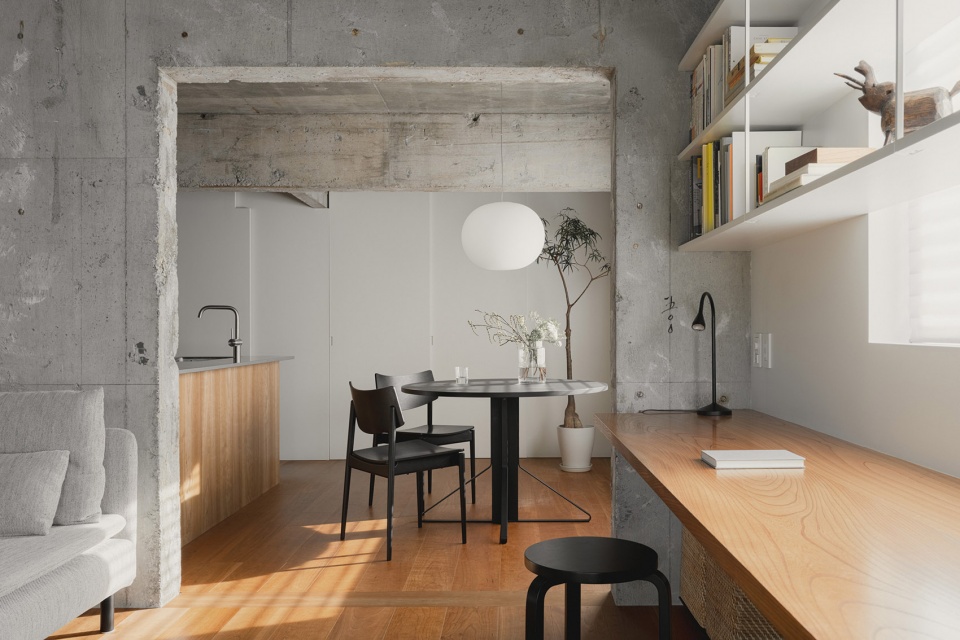
▼轻盈宽敞的客厅,light and spacious living room ©Tomooki Kengaku

▼轻盈宽敞的客厅局部,light and spacious living room ©Tomooki Kengaku
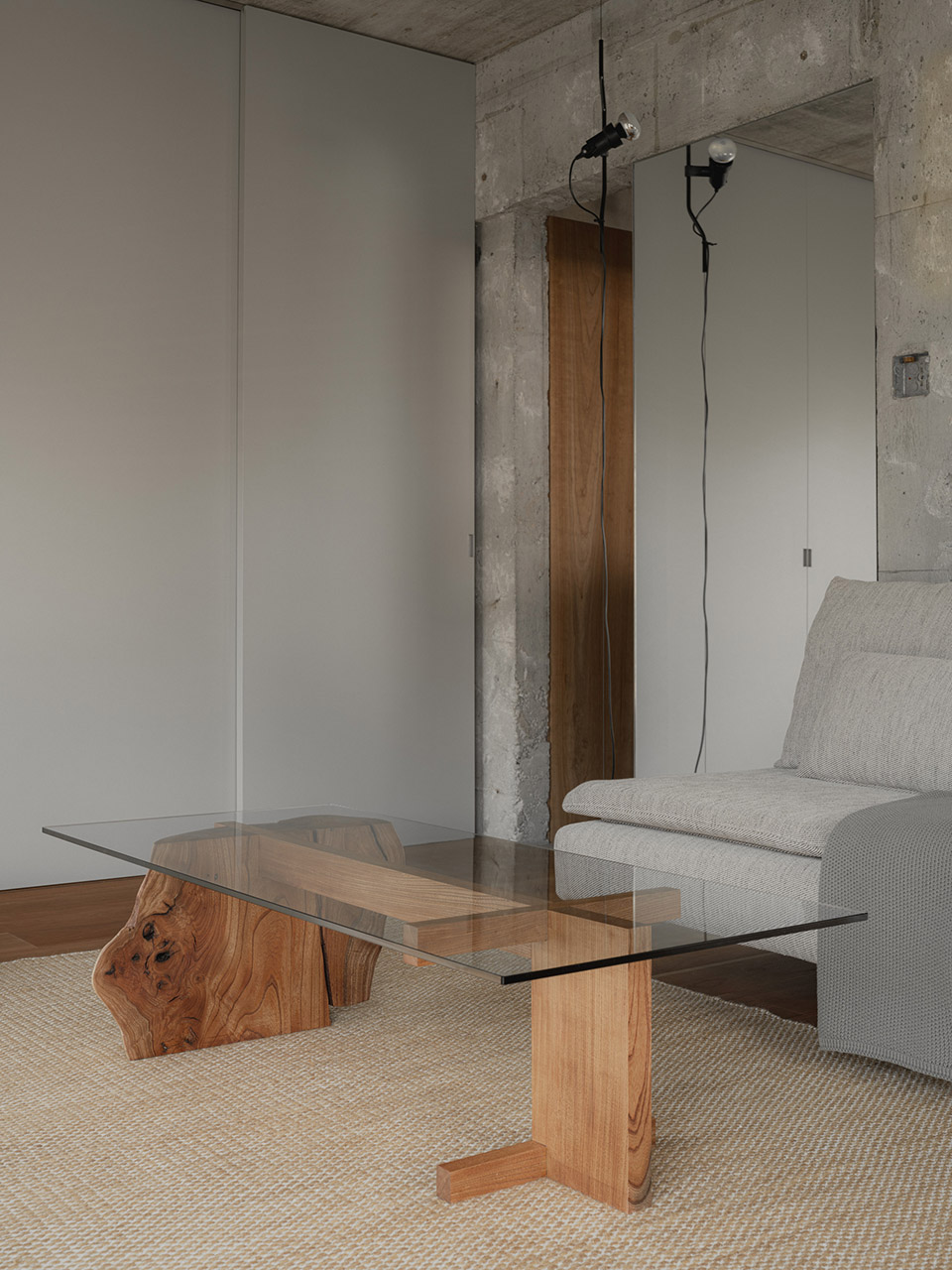
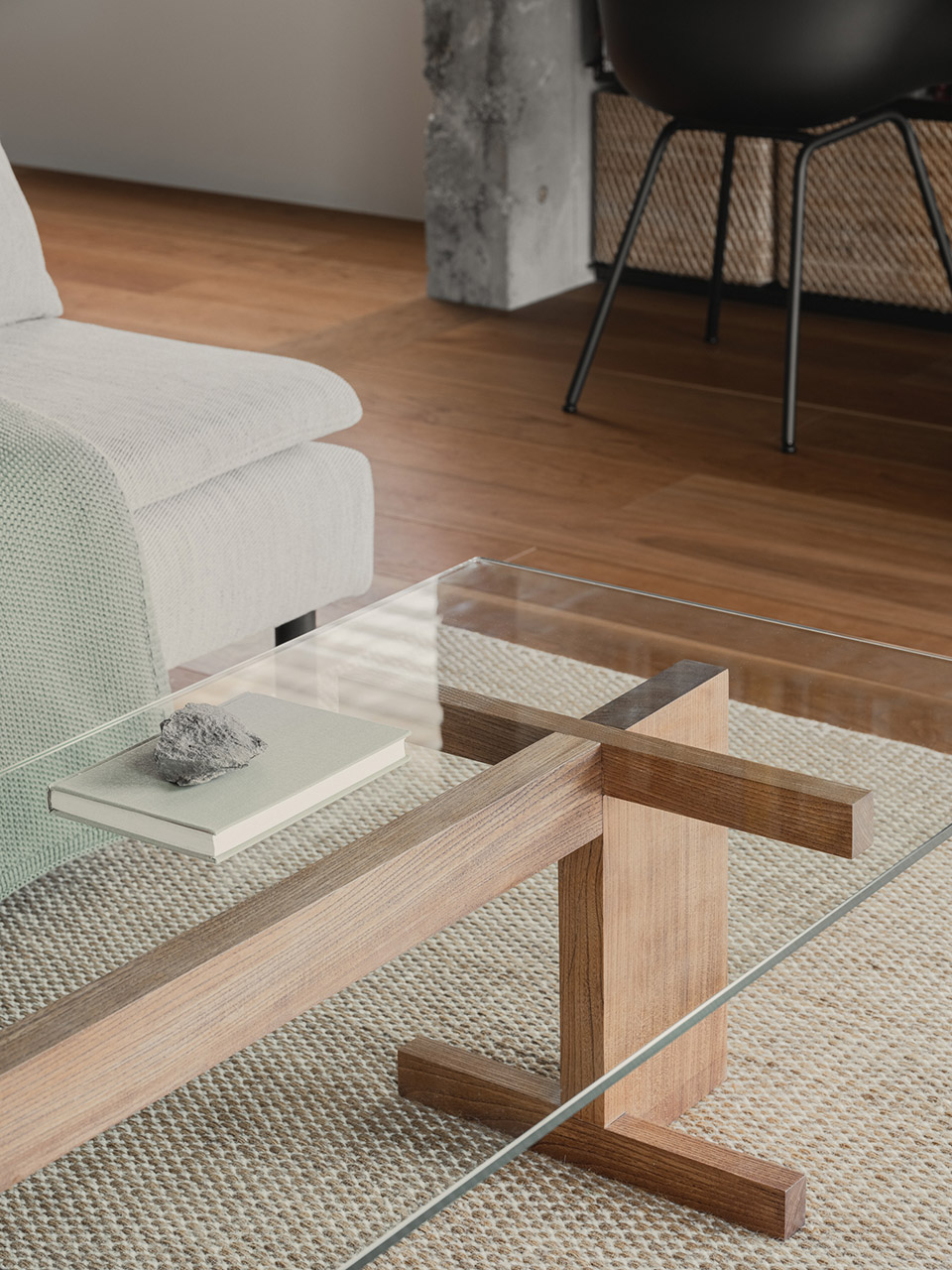
以厨房为核心的布局
Planning around the kitchen
家中有一对夫妇和他们年幼的孩子们一同居住,厨房就成为了他们生活景象的核心。厨房被放置在这栋住宅的核心位置,因为当人站在厨房柜台前时,他可以看到餐厅,书桌和卧室的情景。不仅如此,为了避免厨房的后部成为一个死胡同,也设计了一条通往客厅的走廊。具有流线的平面为小型住宅带来宽阔感。
In this house where a couple and their small child live, the kitchen was at the center of their living image. The kitchen was placed at the center of the house so that when one stands at the kitchen counter, one can see into the dining room, desk space, and bedrooms.In addition, to avoid a dead end at the back of the kitchen, a path to the living room was provided. A plan with circulation flow provides a sense of expansiveness to a small residence.
▼以厨房为核心的布局,planning around the kitchen ©Tomooki Kengaku
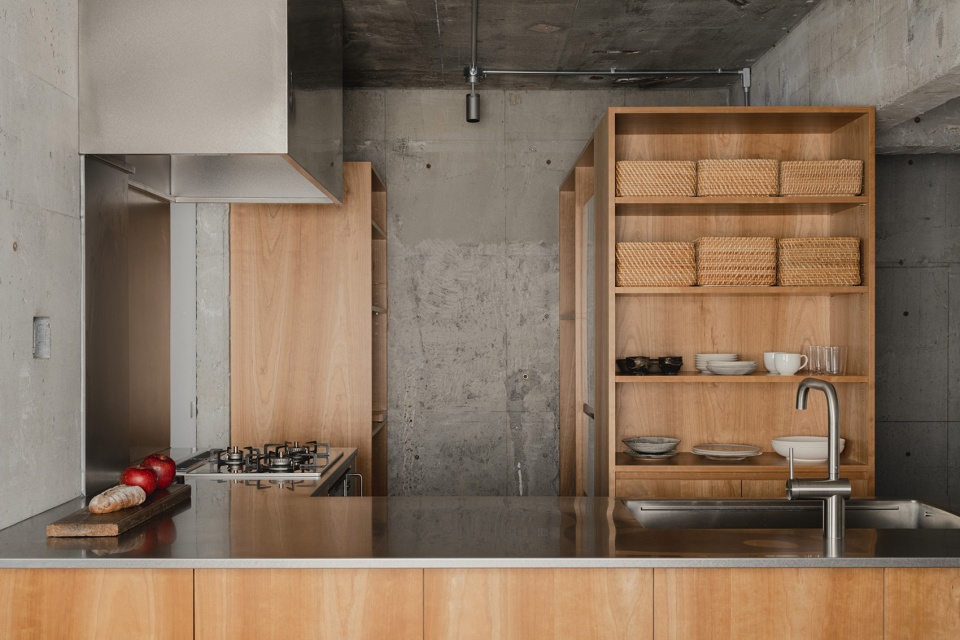
▼厨房空间,kitchen space ©Tomooki Kengaku
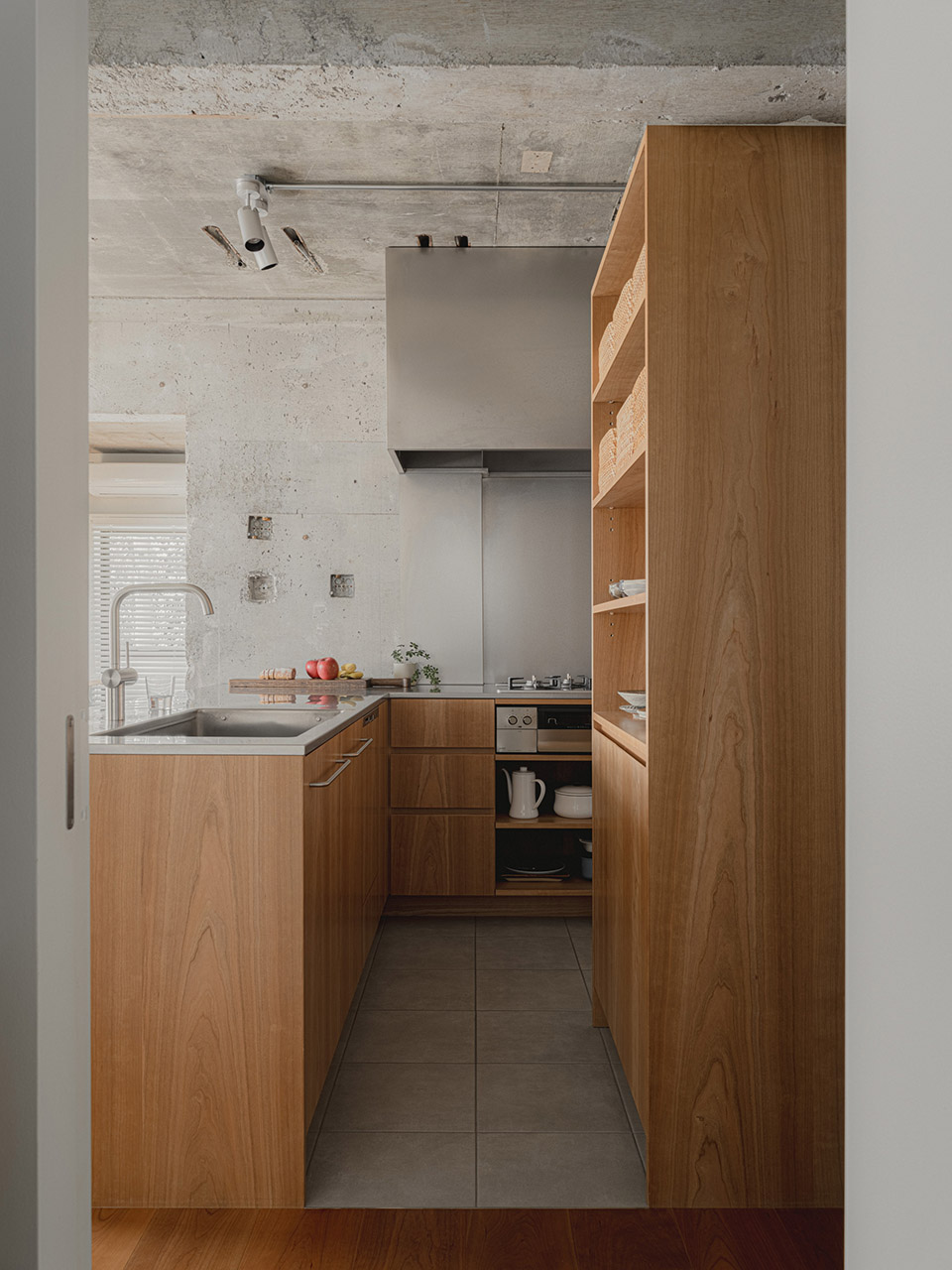
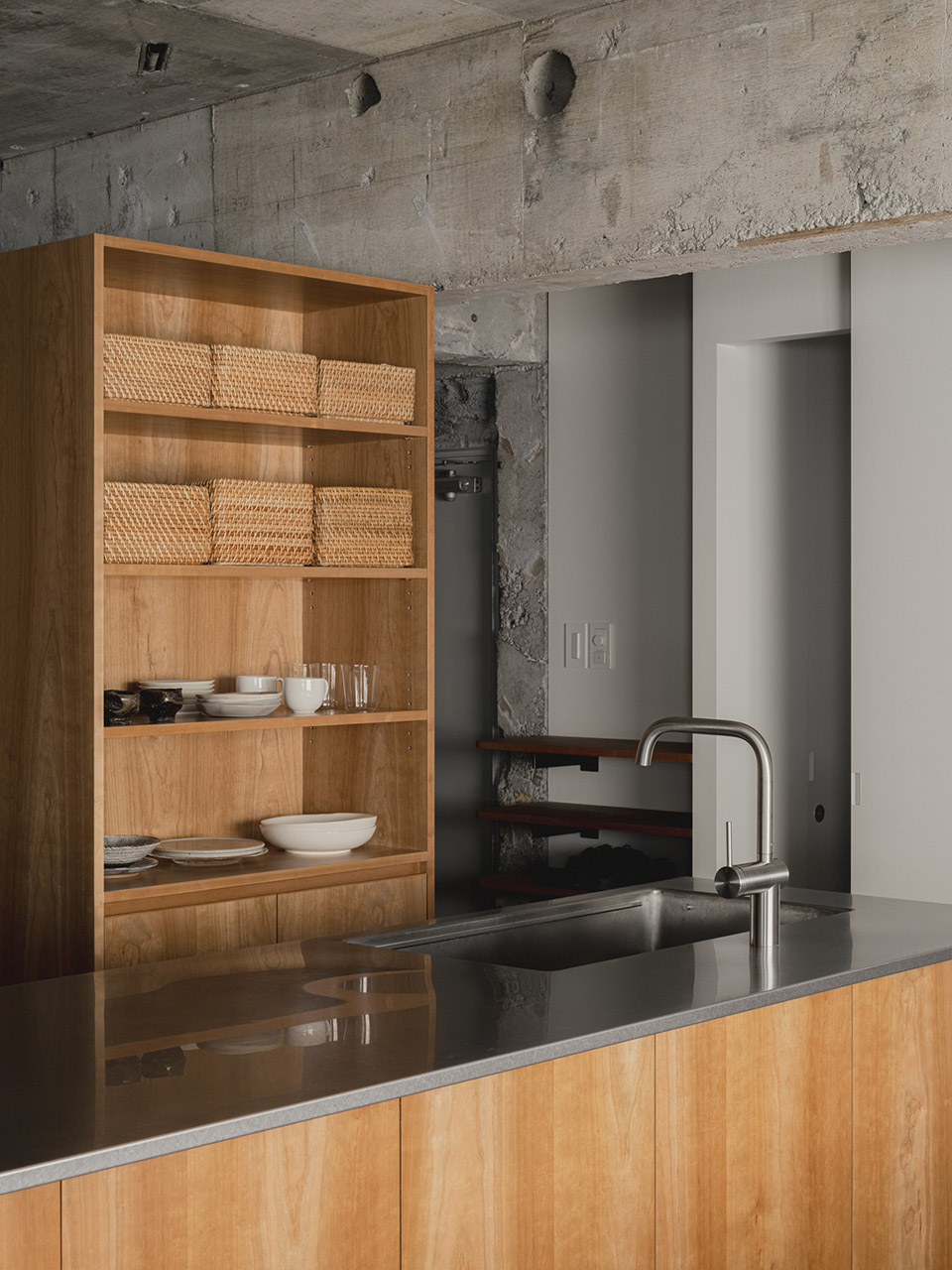
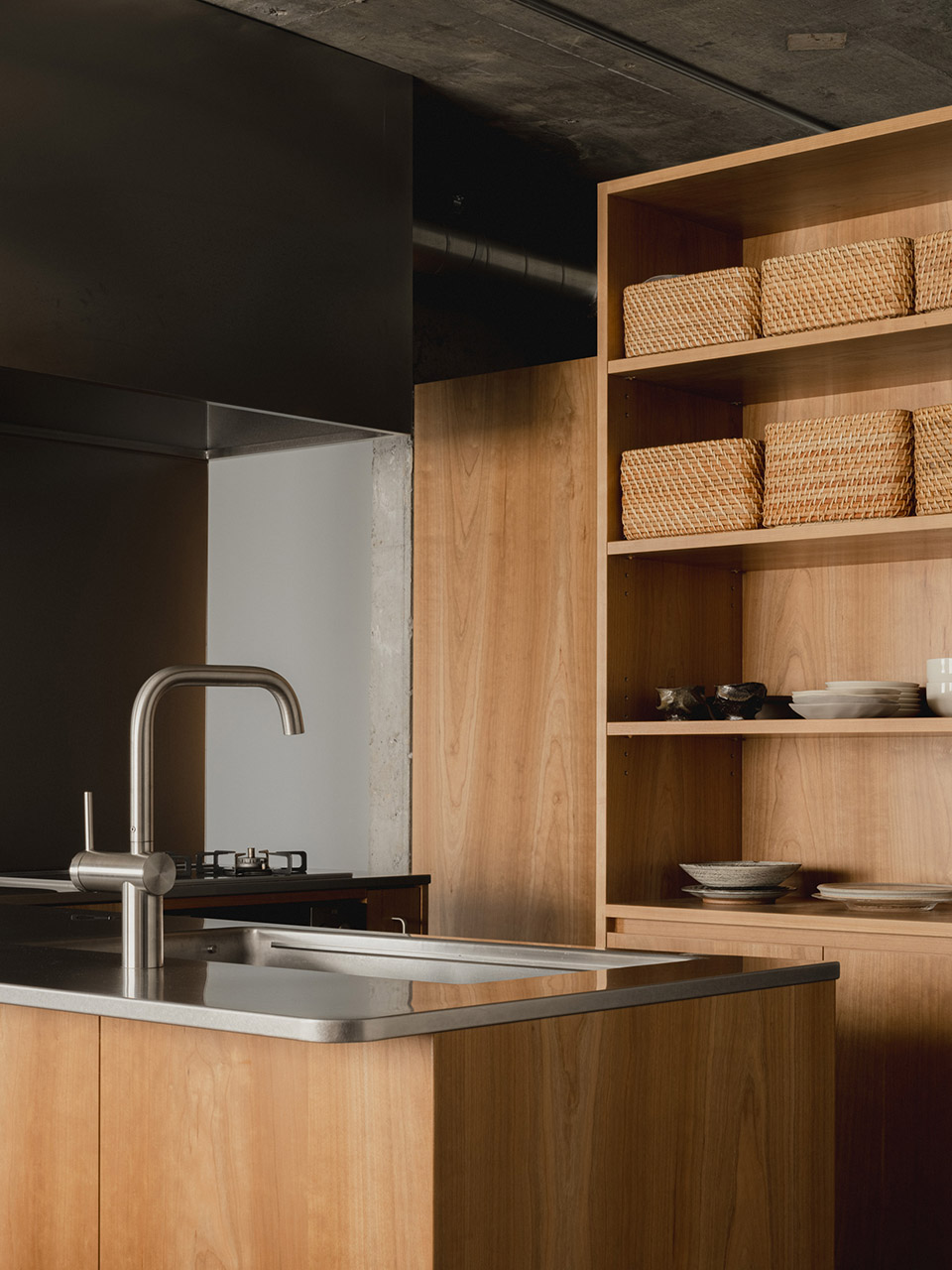
相辅相成
Contrast and juxtaposition
当建筑师选择材料时,樱桃木因其精细的纹理和舒适的触感被选作主要材料,同样它也创造了一种与50年前建造的粗糙混凝土框架之间的对比。
In the selection of materials, cherry wood, with its fine grain and pleasant texture, is used as the main material, with the intention of creating a contrast with the rough concrete frame that was made 50 years ago.
▼樱桃木与混凝土形成鲜明对比,cherry wood creating a contrast with the rough concrete frame ©Tomooki Kengaku

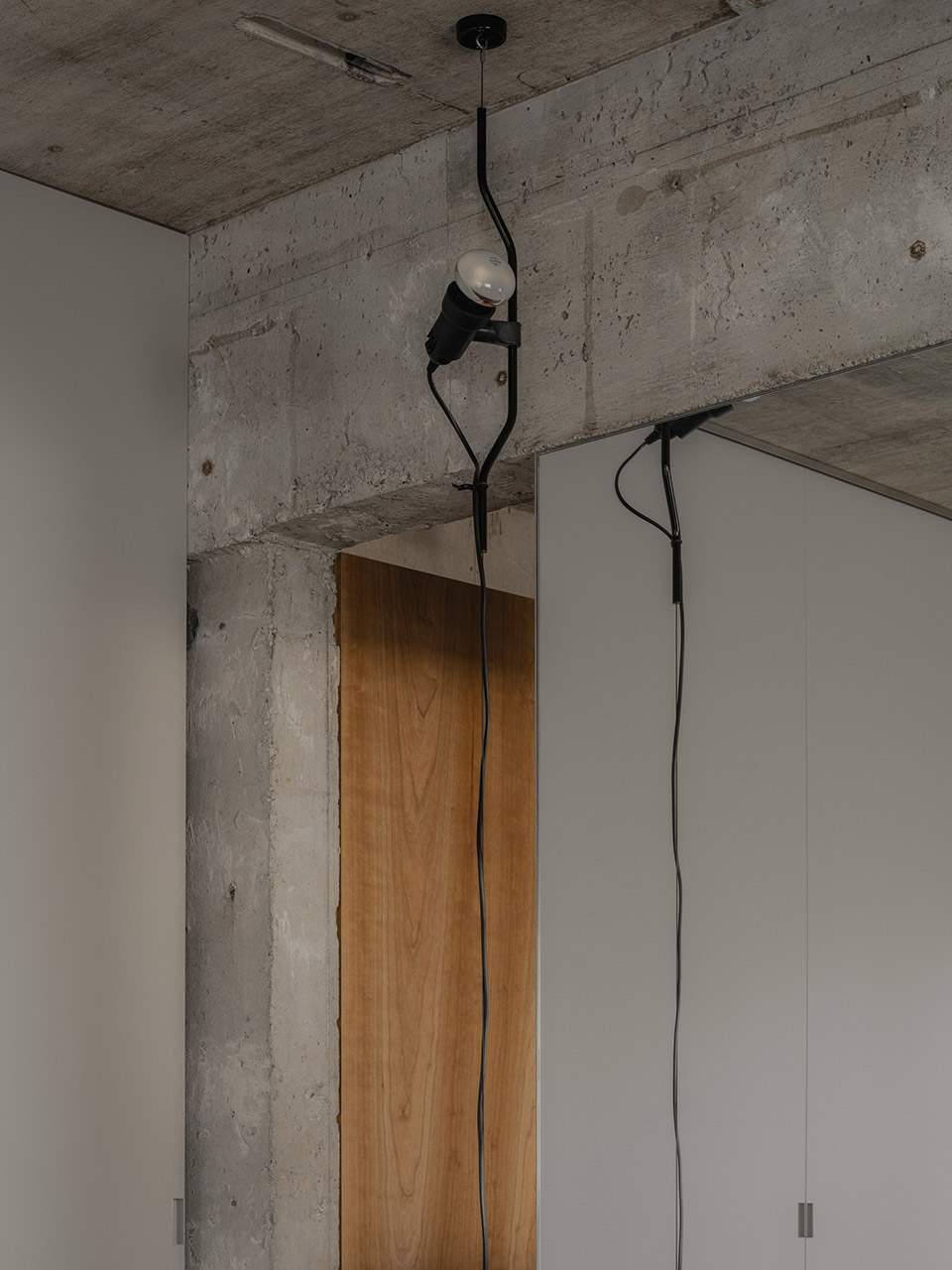
▼厨房后部的镜面,mirror at the back of the kitchen ©Tomooki Kengaku
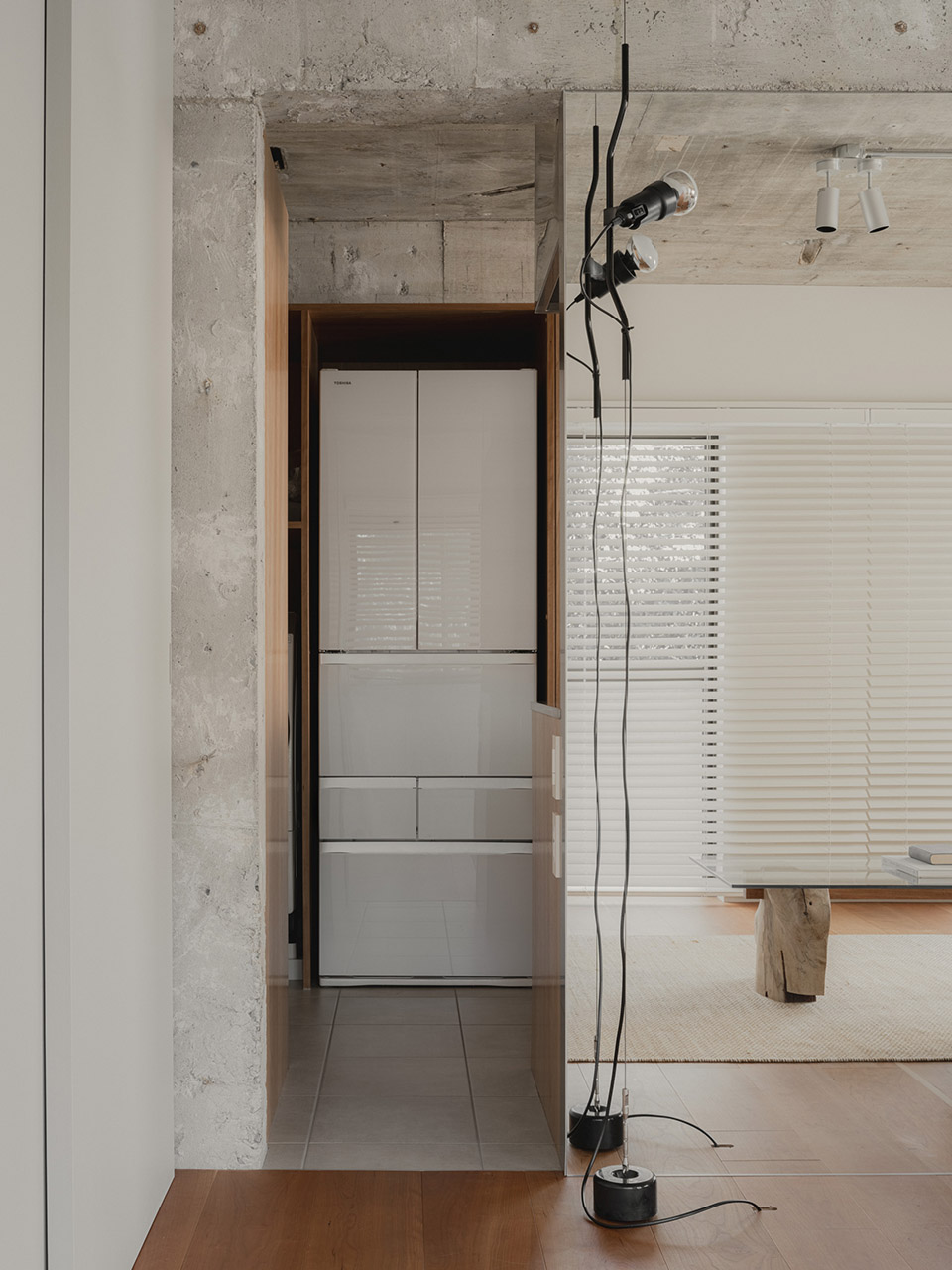
▼书房,study room ©Tomooki Kengaku
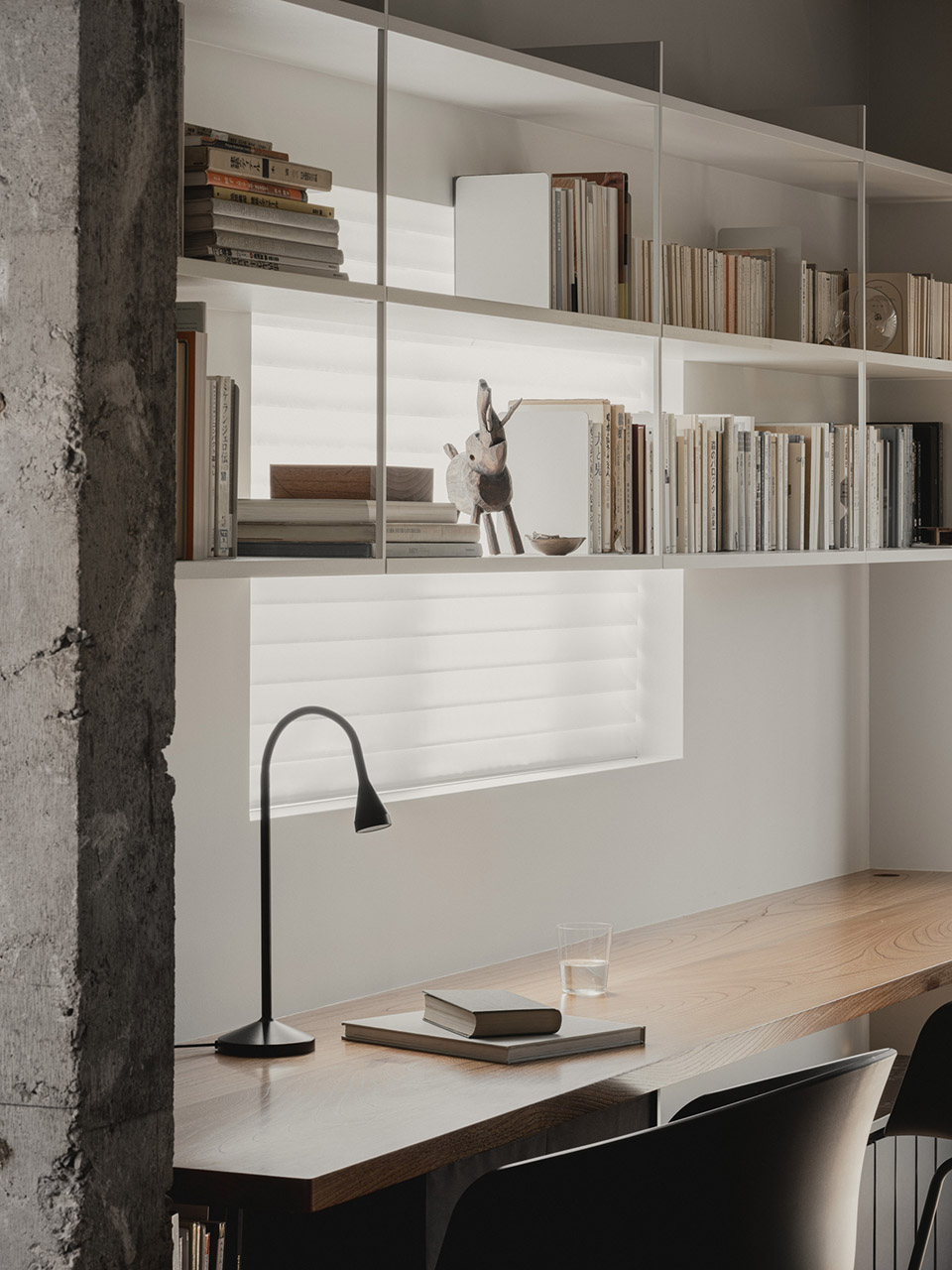
▼卧室,bedroom ©Tomooki Kengaku
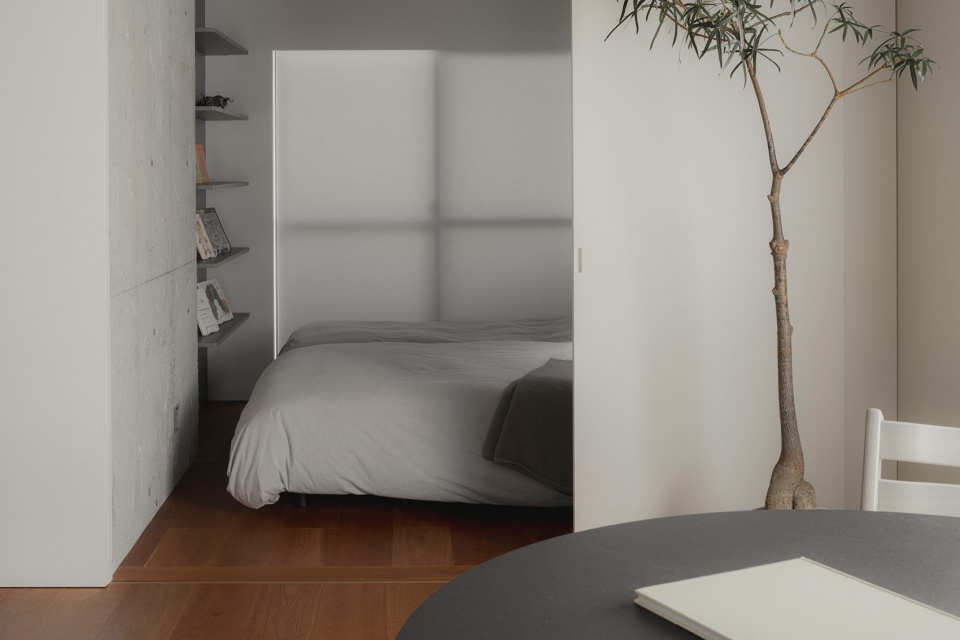
同样,为了呼应窗前可见的榉木林,建筑师选用了榉木作为长桌和咖啡桌的材料。用作咖啡桌的榉木是从旧材料中回收而来并完成的设计。
Also, in correspondence with the zelkova forest visible through the windows, we used zelkova wood for the long desk and coffeetable. The zelkova wood used for the coffee tables was recycled from old materials to create the design.
▼面向榉木林,facing the zelkova forest ©Tomooki Kengaku
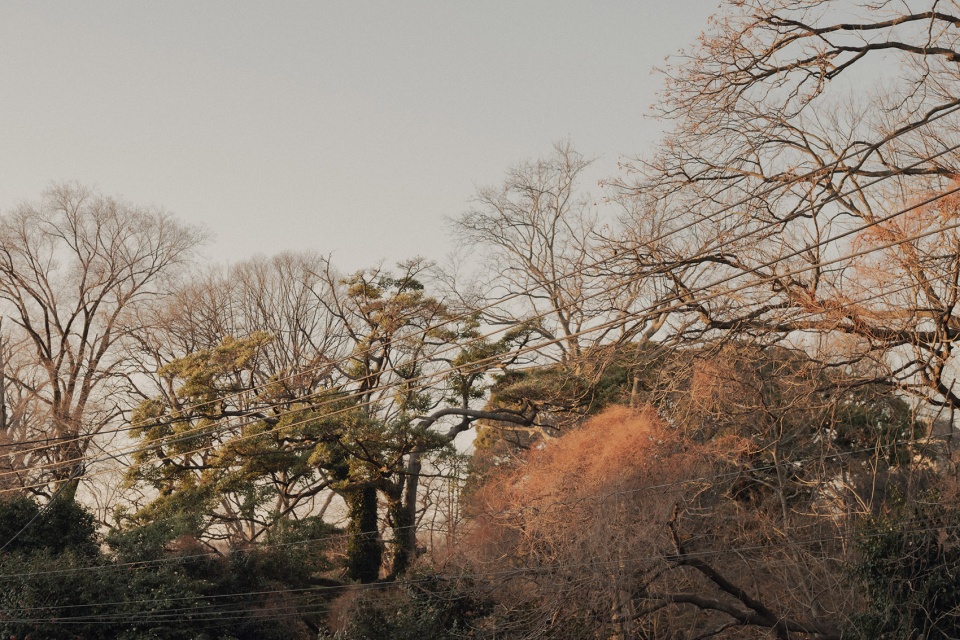
在厨房后方放置了一面巨大的镜面来降低其存在感。同时在视觉上增强纵深感,并将室外的绿色植物引入室内。
A large mirror is placed on the wall behind the kitchen to minimize its presence, visually enhance depth, and serve as a device tobring the outdoor greenery into the interior of the house.
▼平面图,plan ©Kenta Hirayama Architect & Associates
